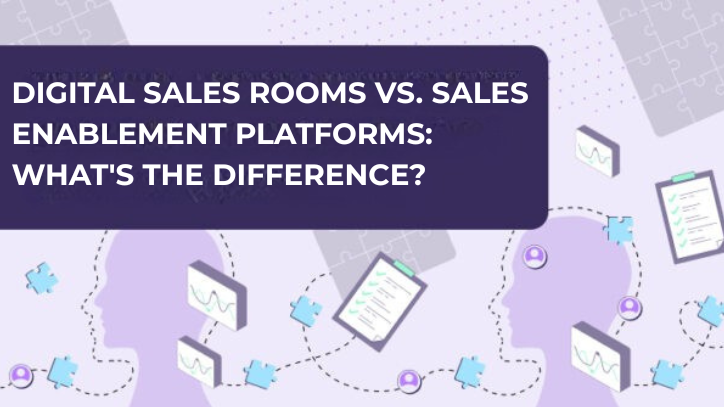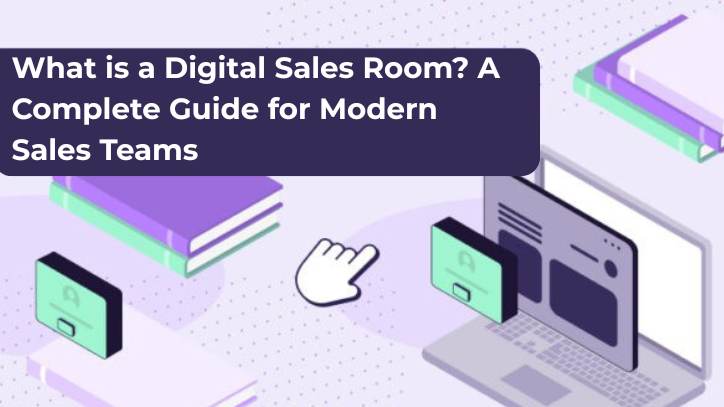Picture this: A potential customer stumbles upon your product.
Now, instead of breezing through marketing jargon or enduring a hard sales pitch, they get to see your product from the outset. They experience your product’s value firsthand, deciding for themselves whether it’s the solution they’ve been searching for.
This isn’t a pipe dream—it’s the cornerstone of product-led marketing (PLM). PLM flips traditional marketing on its head by positioning the product as the hero of the customer journey. By offering real value upfront, it builds trust and engagement naturally.
This strategy is rapidly gaining traction among modern B2B companies, proving that sometimes the best sales pitch is one where the product speaks for itself.
What is product-led marketing?
Product-led marketing is an innovative approach where the product itself drives customer acquisition, engagement, and retention.
At its core, this strategy ensures that the product takes center stage, empowering potential customers to explore and experience its value without committing upfront. The result? A marketing narrative rooted in authenticity.
Unlike traditional methods that focus heavily on promotional messaging or feature comparisons, product-led marketing invites prospects to “test-drive” the product. For example, software companies often provide free trials or freemium models that allow users to unlock key features before making a purchase decision.
This not only builds credibility, but also aligns with the user’s decision-making process, reducing friction along the buyer’s journey.
Product-led marketing positions the product as the ultimate brand ambassador, focusing on solving real customer needs rather than delivering a hard sell.
What being a product-led company means
To call itself product-led, a company must embrace a philosophy that places the product at the heart of every decision and interaction.
It’s not just about having a great product—it’s about integrating that product into the user’s journey as the primary driver of growth, engagement, and customer satisfaction.
A product-led company prioritizes understanding user needs through data and feedback. This means leveraging product analytics to monitor user behavior, identifying pain points, and iterating on the product to deliver maximum value. The product isn’t static. It evolves to align with the goals and challenges of its users.
Collaboration across teams is another hallmark of a product-led organization. Marketing, sales, product, and customer success teams work in unison to ensure a cohesive experience.
For example, marketing efforts align closely with product launches, and customer success teams use product data to enhance onboarding and adoption strategies.
Crucially, a product-led company sees the product as both the marketing channel and the sales tool. Features like in-app messaging allow direct communication with users, helping to promote upgrades or new features. This approach transforms free users into paying customers by demonstrating value first and building trust along the way.
Ultimately, being product-led is about creating an ecosystem where the product markets itself—delighting users, fostering loyalty, and driving sustainable growth.
Principles of product-led marketing
Data-driven strategies
Data is the backbone of effective product-led marketing.
By analyzing user behavior and engagement, companies gain critical insights into how customers interact with their product.
This data helps marketers identify activation points—key moments when users experience the product’s value, such as completing a setup or discovering a unique feature.
With such actionable insights, marketers can fine-tune messaging, improve customer onboarding, and drive conversions more effectively.
Solving prospects’ pain points
At its heart, product-led marketing isn’t just about showcasing features—it’s about solving problems.
Successful companies dive deep into understanding their audience’s challenges and position their product as the solution.
Regular product iterations based on user feedback ensure that the product evolves to meet customer needs, fostering loyalty and trust.
Prioritizing value over features
Features are essential, but they’re not what keeps customers hooked—value does.
Product-led marketing emphasizes the tangible benefits that users derive from the product.
Interactive demos and trial periods further reinforce this value, helping users visualize how the product can simplify their lives or solve complex problems.
Focusing on benefits before sales
Traditional sales funnels often frontload information about pricing and packages, but product-led marketing flips the script.
By allowing users to experience the product’s benefits first, it removes skepticism and builds trust.
Appealing to the end user
Product-led marketing succeeds when it focuses on the end user’s needs, aspirations, and pain points. Understanding these factors allows companies to craft personalized value propositions.
By combining these principles, product-led marketing creates an ecosystem where the product itself becomes the ultimate sales tool—delighting users, addressing their pain points, and driving growth through authentic engagement.
Benefits of product-led marketing
Product-led marketing offers a refreshing approach that aligns seamlessly with modern consumer expectations.
Instead of relying solely on traditional advertising or aggressive sales tactics, it places the product at the center of the customer journey, creating a more intuitive, engaging, and effective marketing strategy.
One key benefit is a holistic and data-informed understanding of the customer journey. By analyzing user behavior within the product, marketers can uncover insights that were previously hidden behind abstract data points. For instance, tracking how customers navigate through a free trial can reveal which features resonate most, enabling tailored messaging and targeted campaigns.
Another advantage is enhanced collaboration between marketing and product teams. When the product becomes the focus, silos break down. Marketing works hand-in-hand with product teams to align on customer needs and priorities, fostering a unified strategy that benefits both departments.
Product-led marketing also allows for more efficient resource allocation. By using analytics to identify high-impact areas, companies can focus their efforts on what drives results rather than casting a wide net. Additionally, it’s easier to collect in-app feedback and social proof, as users can share their experiences directly within the product interface. This organic feedback loop helps refine the product while building trust and credibility.
Lastly, this approach often leads to higher customer conversion and retention rates. When users experience a product’s value firsthand, they’re more likely to invest further.
Imagine a user who starts with a free version, loves its capabilities, and eagerly upgrades to access premium features. This journey feels natural, eliminating the resistance often associated with traditional sales funnels.
How to build a product-led marketing model
Understand your users’ problems
At the core of product-led marketing is a deep understanding of your users and their challenges.
Start by identifying the key problems your product solves. Use tools like surveys, support tickets, and in-app analytics to gather data. For example, track which features users interact with most or what questions they ask during onboarding.
Craft user stories to encapsulate these insights.
By focusing on specific user needs, you can ensure that your product—and marketing strategy—addresses real pain points effectively.
Create problem-solving content
Your content should position your product as the solution to common challenges.
Transform your blog into a resource hub filled with how-to guides, case studies, and tips that naturally integrate your product. For instance, if your product streamlines project management, your blog could include articles on best practices for team collaboration, each subtly showcasing how your tool simplifies the process.
This approach builds trust while driving organic traffic.
Develop a comprehensive knowledge base
Take your content strategy further by building a knowledge base or learning center.
Organize it around common user challenges and provide detailed guides, FAQs, and tutorials. This not only improves customer experience, but also supports SEO efforts.
When users search for solutions, your knowledge base can appear in search results, offering immediate value and reinforcing your product’s authority.
Leverage social proof and reviews
Encourage users to leave reviews directly within your product interface.
Don’t shy away from constructive criticism—addressing it publicly shows transparency and a commitment to improvement. When potential customers see thoughtful responses to both praise and critiques, it fosters trust.
Highlight authentic user stories or testimonials that showcase your product’s impact in real-world scenarios.
Optimize for SEO
Ensure all your content is optimized for search engines.
Use keywords that reflect user questions and challenges, and structure content to rank in answer boxes and featured snippets. For example, a well-optimized article in your knowledge base could serve as a top-ranking resource for a common industry problem, driving new users to your site.
Measure what matters
Shift your performance metrics to align with product-led goals.
Instead of focusing solely on leads and conversions, track metrics like customer satisfaction, time to first response, and daily active users.
These indicators provide a clearer picture of user engagement and product success.
The ultimate metric? User recommendations. When customers advocate for your product, it’s the strongest validation of your marketing strategy.
By following these steps, you can create a product-led marketing model that not only attracts users but also fosters long-term relationships, turning your product into a growth engine for your business.
How product-led marketing can help your business grow
For B2B SaaS companies, product-led marketing is a game-changer that directly impacts growth, efficiency, and long-term success.
By centering your go-to-market strategy around the product, you create a seamless user experience that drives customer acquisition, engagement, and retention in an organic and cost-effective way.
At its core, product-led marketing allows businesses to use their product as the main vehicle for growth. This means offering features like free trials, freemium models, or in-app experiences that demonstrate value upfront. By doing so, potential customers can explore and evaluate the product on their terms, significantly reducing friction in the buying process.
This not only fosters trust, but also leads to higher conversion rates, as prospects naturally progress from curious testers to loyal customers.
On top of this, a product-led approach ensures efficient resource allocation. Instead of spending heavily on traditional marketing campaigns that may not yield results, B2B SaaS companies can focus their efforts on optimizing the product experience and leveraging data to guide their strategies. For example, tracking user behavior can reveal patterns and highlight opportunities for upselling or expansion, leading to sustained growth.
By integrating marketing tactics directly into the product—through personalized in-app messaging, onboarding guides, and feature highlights—businesses can nurture users toward becoming advocates.
This approach not only increases customer satisfaction, but also enhances the likelihood of referrals, creating a cycle of sustainable growth.
Examples of product-led marketing
Product-led marketing has revolutionized the way SaaS companies attract, engage, and retain customers.
By placing the product at the center of the user journey, brands can deliver tangible value upfront, turning potential users into loyal advocates.
Let’s explore a few examples of how companies have successfully embraced this approach.
Slack
Slack revolutionized team collaboration with its communication platform designed for real-time messaging and calls.
Its freemium model offered free access to basic features, allowing users to experience the product’s value firsthand. If users needed advanced features, they could upgrade to paid plans.
This strategy reduced barriers to entry while building trust and familiarity with the product. By using the product itself as a marketing tool, Slack showed how businesses can turn free users into paying customers through seamless onboarding and continuous value delivery.
Mailchimp
Mailchimp’s approach to email marketing demonstrates another successful product-led strategy.
By offering a user-friendly interface and robust free plan, Mailchimp allowed small businesses to explore its capabilities without commitment. Tutorials, in-app guidance, and intuitive workflows enabled users to see results quickly.
These experiences encouraged users to invest in premium features, proving that simplicity and usability are cornerstones of a strong product-led marketing strategy.
How interactive demos can help your product-led marketing
Interactive demos are a powerful tool for any product-led marketing strategy, especially for SaaS companies that are looking to take their product-led marketing strategy to the next level.
This is because interactive demos will give potential customers the opportunity to engage directly with your product, helping them visualize how it can solve their specific problems. By creating a hands-on experience, interactive demos eliminate the guesswork and build confidence in the product’s value.
One of the greatest advantages of interactive demos is their ability to highlight key features in a guided, tailored way. Instead of overwhelming users with every capability at once, interactive demos can focus on the aspects most relevant to a user’s needs. This approach ensures users immediately see how the product addresses their pain points, making the buying decision easier and more intuitive.
With tools like these, you can showcase your product’s best features, build trust, and turn prospects into enthusiastic customers—all while keeping your product front and center in your marketing efforts.





